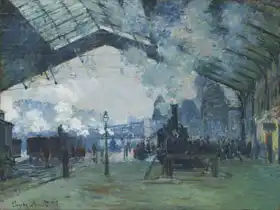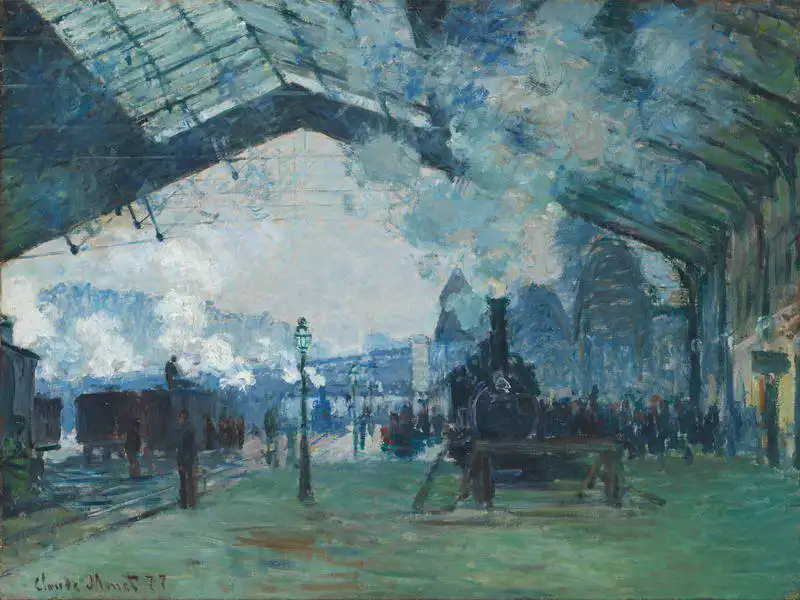About this finishing
Print. The image is printed on the top quality 10-ink HP Z9PS printer on HP matte 270 g / m2 paper. You can choose any size to an accuracy of 1 cm. A margin of 5 cm around the image is added to the size of the motif.


You can find a detailed description about our finishings
here.
Check the train station to the Saint Lazare
The painting depicts a scene from a train station with the roof shading the entire upper half of the painting. We see a steam locomotive and blurred figures of people either walking on the platform or standing. Near the locomotive is a lamp post. The light permeates the atmosphere and creates soft reflections on the roof of the station. The painting is executed in an impressionist style with visible brushstrokes and vivid colours, offering a dynamic and spontaneous expression.
This description was created by artificial intelligence, please be indulgent.
Prevailing color of this fine art print is blue and its shape is landscape. This image is printed on demand - you can choose material, size and finishing.
Claude Oscar Monet (1840-1926). A native Parisian, who thoroughly developed the idea of
Impressionism. Monet almost scientifically studied the effect of light on different objects. He devoted himself to so called transitory states, which quickly led him to work with colour and light, his paintings acting on the viewer from the first impression. His use of open-air painting and objects which were special only because of light opened the way for the beginnings of modern painting. Monet’s
Impression, Sunrise (1874) not only gave the name to the whole art movement, but secured Monet a place among the best painters of all times. At one time, he resided in London and created his famous study
Houses of Parliament (Monet wondered, How could the English painters paint Parliament when it cannot be seen for the fog?). In the
Giverny, which became his favourite retreat after the death of his wife, he painted motifs from his garden and the popular series
Water Lilies - the world of the water was as poetic and mysterious as a primordial paradise.


